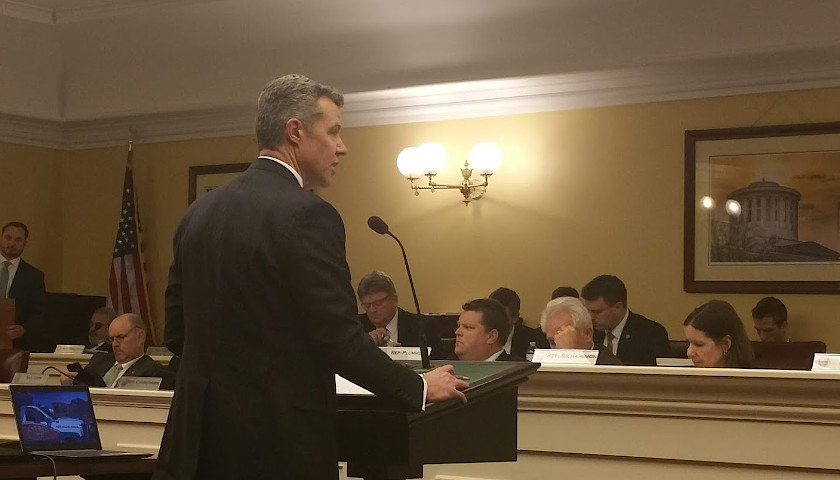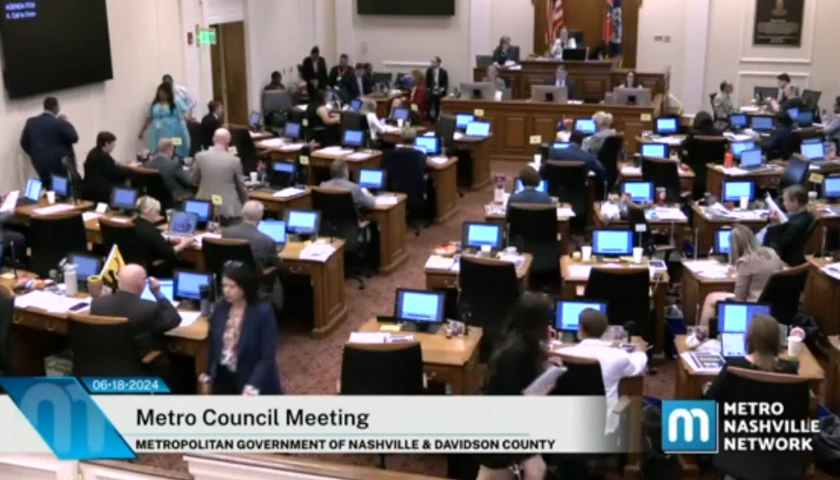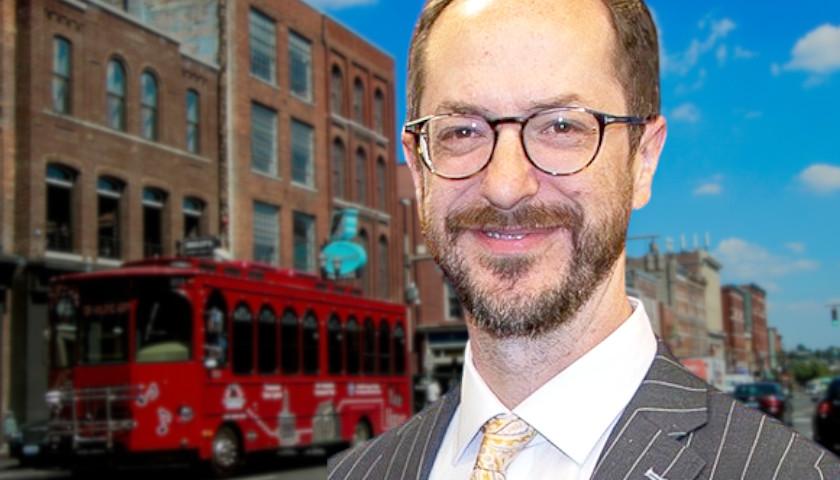COLUMBUS, Ohio – As Ohio lawmakers consider the call by newly-inaugurated Governor Mike DeWine for an increase in motor fuel taxes of 18 cents per gallon on both gas and diesel, both the state House and Senate have heard testimony on the matter.
One of the witnesses providing testimony used Tennessee’s 2017 passage of Governor Bill Haslam’s gas and diesel tax increasing IMPROVE Act – Improving Manufacturing, Public Roads and Opportunities for a Vibrant Economy – as an example of a gas tax increase successfully implemented over the past several years.
American Association of State Highway and Transportation Officials (AASHTO) is a non-profit, non-partisan association representing highway and transportation departments in all 50 states plus the District of Columbia and Puerto Rico, according to its website.
“Its primary goal is to foster the development, operation, and maintenance of an integrated national transportation system,” representing all transportation modes including air, highways, public transportation, active transportation, rail and water.
Jim Tymon, Executive Director of AASHTO since January 2019, submitted a written copy and presented verbal testimony at the Ohio State House Finance Committee earlier this week, and to the Ohio State Senate Transportation, Commerce and Workforce Committee the following day.
Tymon’s nine-page written testimony on House Bill 62 was also read by him to the House Finance Committee on Tuesday and covered three topics: the need to make a stronger value proposition to the public for investing in highway transportation infrastructure; benefits of improving our highways and the impacts of not adjusting revenue sources; and, lessons learned from revenue-raising efforts by peer states around the country.
Primarily nationwide statistics were cited by Tymon to make the case that there is a need for increased investment in our nation’s transportation network based on his belief that “the value provided by our nation’s transportation network is well worth the contribution being asked from system users.” Tymon said that previously conducted man-on-the-street interviews revealed that respondents significantly underestimated the amount of state and federal gas taxes the typical driver pays each year.
Tymon’s value comparison was made in the context of other monthly and utility and service fees, like electricity, gas, cell phone, cable and internet.
Tymon reported that more than 37,000 people died on the nation’s highways in 2017, and later added that according to a Federal Highway Administration (FWHA) study, $100 million spent on highway safety improvements will save 145 lives over a 10-year period. That equates to about 15 lives per year or about 0.04 percent of the 37,000 annual highway fatalities.
On a personal level, the loss of a loved one through a highway accident is tragic. From a taxpayer appropriation standpoint, the potential minimal reduction in highway fatalities comes at a tremendous financial cost. The $100 million expenditure was not described in terms of what it will buy or how it will directly impact the highway fatality rate .
Also discussed was the reduced buying power since the last time the federal or Ohio gas tax was last increased, including construction cost inflation and the fuel efficiency of today’s vehicles. Interestingly, there was no discussion of how increased motor fuel taxes drives up the costs of everything produced or transported thereby contributing to reduced buying power. Also lacking was cost reductions or improvements in the road building process as a method to offset inflation.
Inflation figures of 60 percent that were presented are exaggerated by more than double according to an on-line CPI Inflation Calculator, which returns that what $1 purchased in 2015 would require $1.29 in 2019.
Under the “lessons learned from revenue-raising efforts by peer states around the country,” a map was presented with the states that enacted gas tax increases and reforms between 2013 and 2018 being highlighted.
To see how Ohio’s “peer states have grappled with and came up with a transportation revenue package,” Tymon cited five specific case studies: Indiana, Tennessee, New Jersey, Georgia and Michigan.
With regard to Tennessee, Tymon reported, “To your south in Tennessee, the Improving Manufacturing Pubic Roads, and Opportunities for a Vibrant Economy (IMPROVE) Act of 2017 is expected to generate $244 million of additional revenues by 2020. The bill includes an increase in the state gas tax from 20 cents per gallon to 26 cents per gallon and an increase in the state diesel tax from 17 cents a gallon to 27 cents a gallon. The Tennessee House passed the measure with a bipartisan vote of 60-37 and the Senate with a bipartisan vote of 25-6.”
Tymon’s report did not include that Tennessee’s gas and diesel fuel tax increases were phased in over a period of three years from 2017 to 2019.
Tymon concluded that there are common themes behind successful efforts to finding resources:
- Transportation problems are clearly explained and demonstrated to the public;
- Benefits of proposed investment are made clear and tangible for system users;
- There is a broad coalition of support beyond self-interest groups;
- There is commitment to accountability and performance outcomes; and,
- Leadership and the willingness to prioritize transportation investment from both the executive and legislative branches is crucial.
Following his presentation, Tymon told The Tennessee Star that he didn’t have to come to Tennessee to help sell the gas tax increase, because former Tennessee Department of Transportation (TDOT) Commissioner John Schroer, who is also the immediate past Chair of AASHTO, along with Governor Haslam toured the state for two years prior to the proposal of the IMPROVE Act building support for it.
In 2017, the year that the gas-tax increasing IMPROVE Act passed, Tymon said John Schroer was the Vice Chair of AASHTO.
The Haslam and Schroer tour did result in a list of 762 road projects in all 95 counties that was included with the passage of the gas-tax increase IMPROVE Act, addressing some of Tymon’s themes for successful efforts to increase fuel taxes.
In Tennessee, as in Ohio, support for tax increases seems to come mainly from those who fall into the self-interested groups as evidenced by who fills the committee rooms as additional funding for roads is discussed, such as the associations of road builders, road engineers, contractors, local governments and even Tymon’s group.
Tymon did not offer if AASHTO’s common themes behind successful fuel tax increases was a strategy in place at the time Tennessee’s Transportation Commissioner John Schroer was chairing the organization.
– – –
Laura Baigert is a senior reporter at The Tennessee Star.






The tax on rural Tennesseans and all Tennesseans is a burden and is taking food off some tables.
It is 240 mile round trip to one doctor. 180 miles round trip to another 100 miles round trip to shop and just abut anything else 880 miles just for doctors in one week, recently.. And we must have a pickup and two other vehicles. And most people cannot afford new vehicles in rural areas.
They must finance one for 5, 6, or 7 years and cut corners to pay the payments.
Fuel Tax increase were to pay for exit and entry ramp from Interstates and roads for Developers, mostly from out of state. All the semi traffic from ports on coasts crowding our interstates and other roads to regional and local warehouses etc beat our roads to death.
Tn Citizens are subsidizing Free Trade and Developers with our Fuel Taxes!